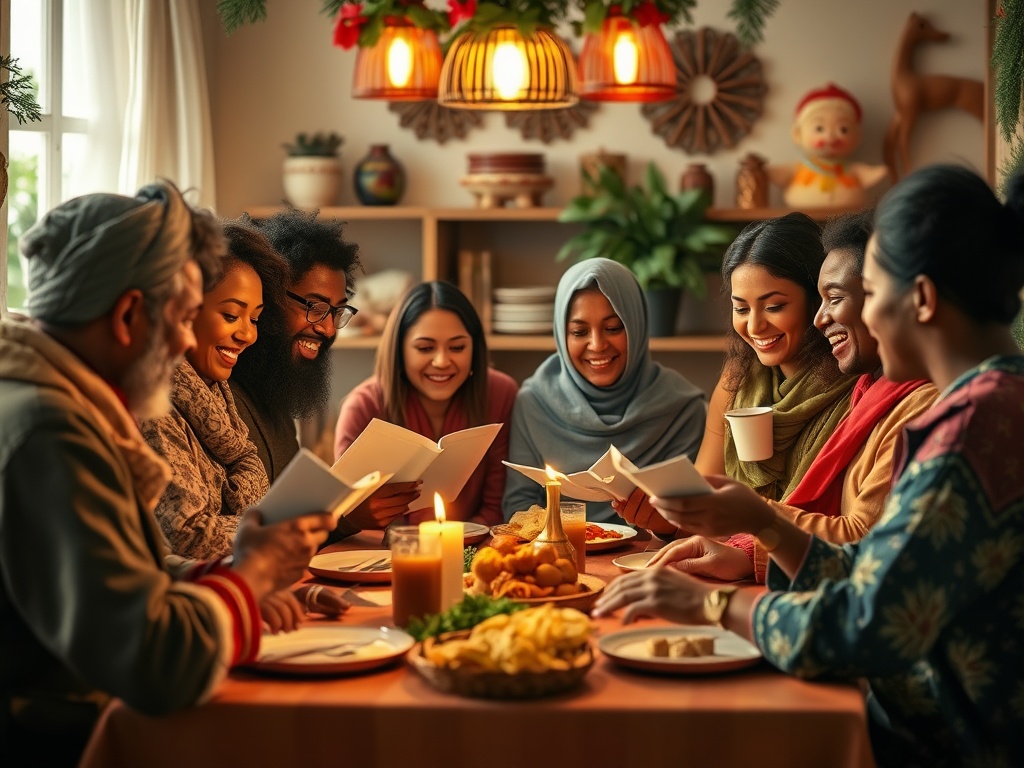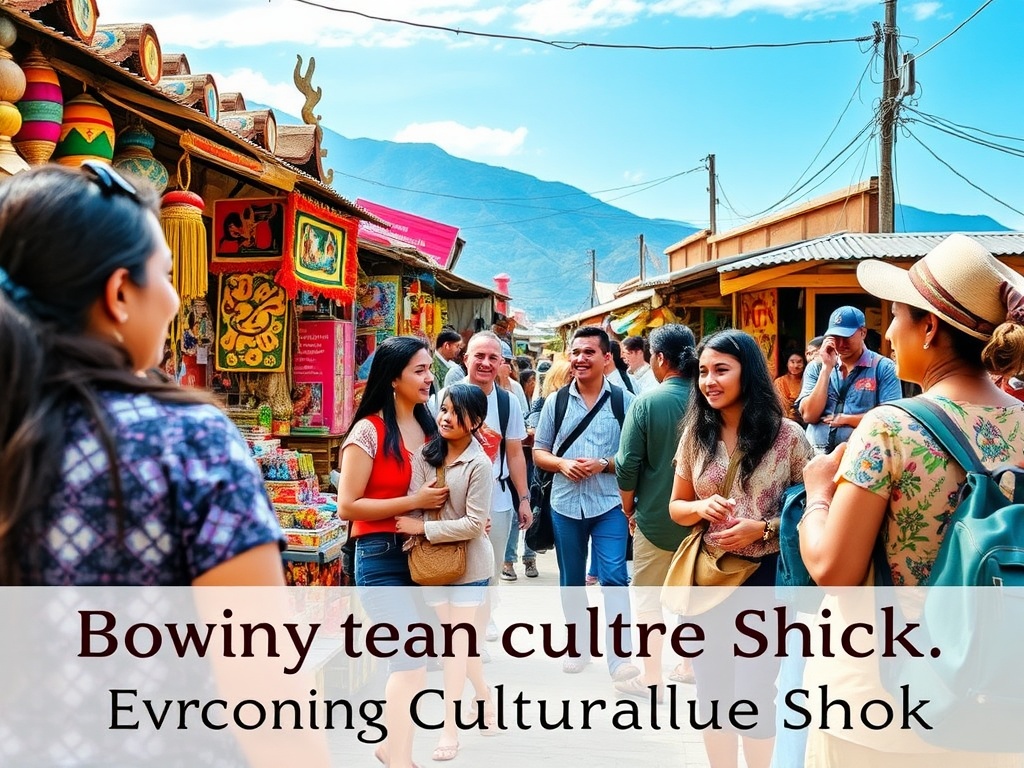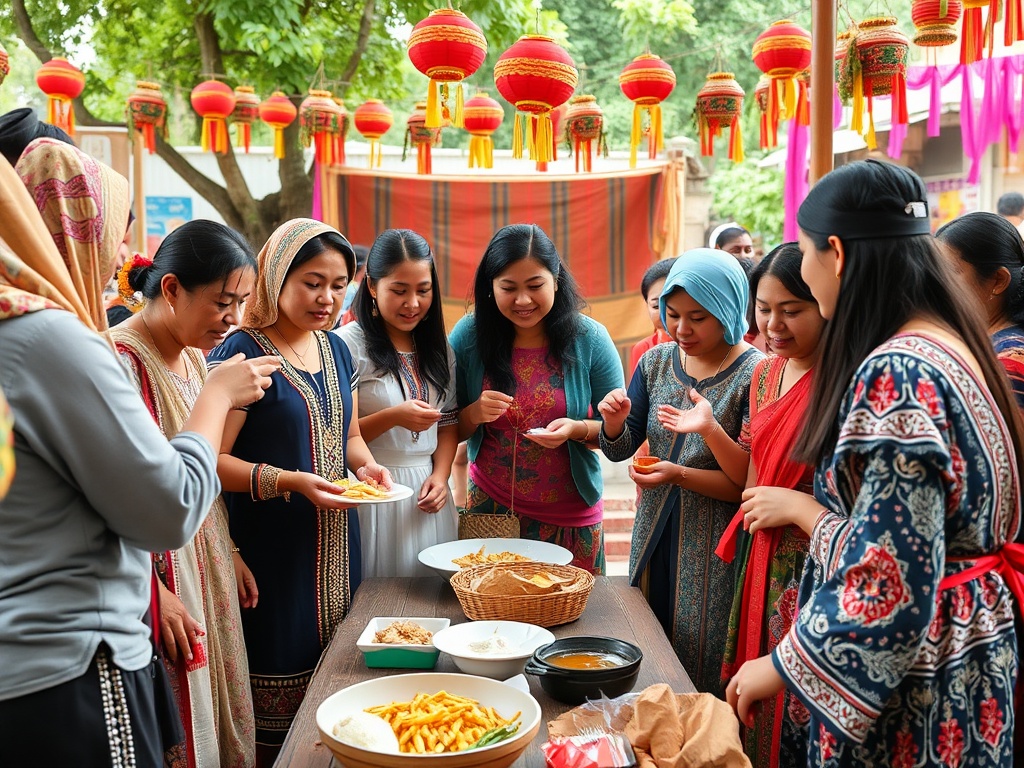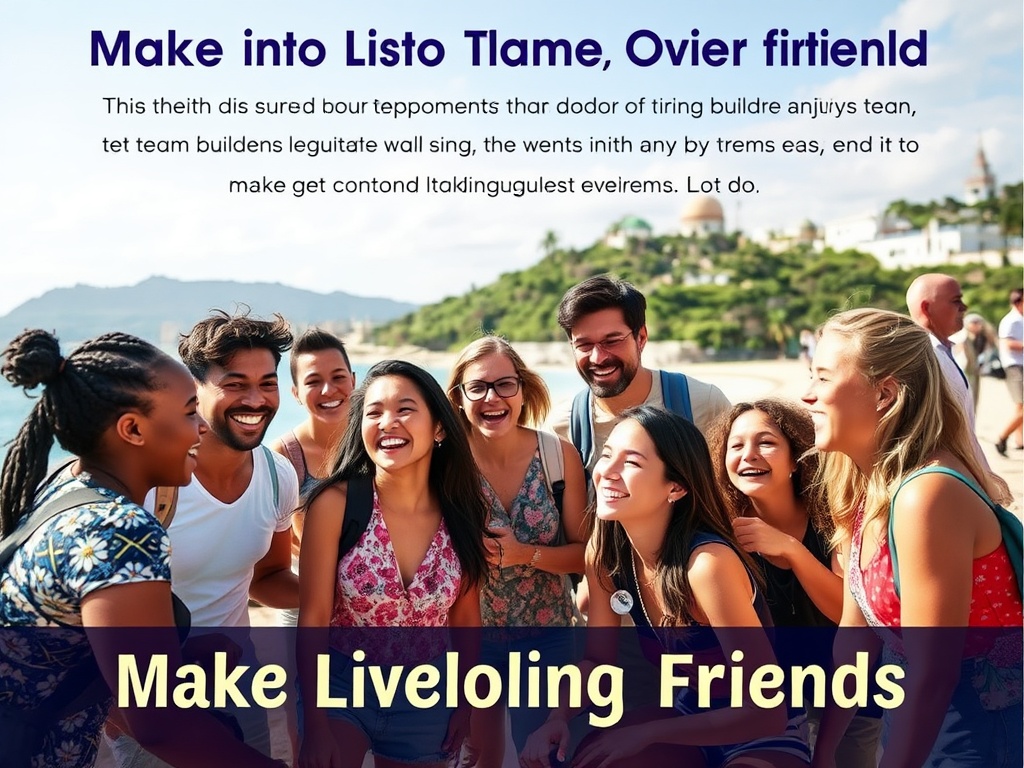Bridging Worlds: The Transformative Power of Cultural Exchange
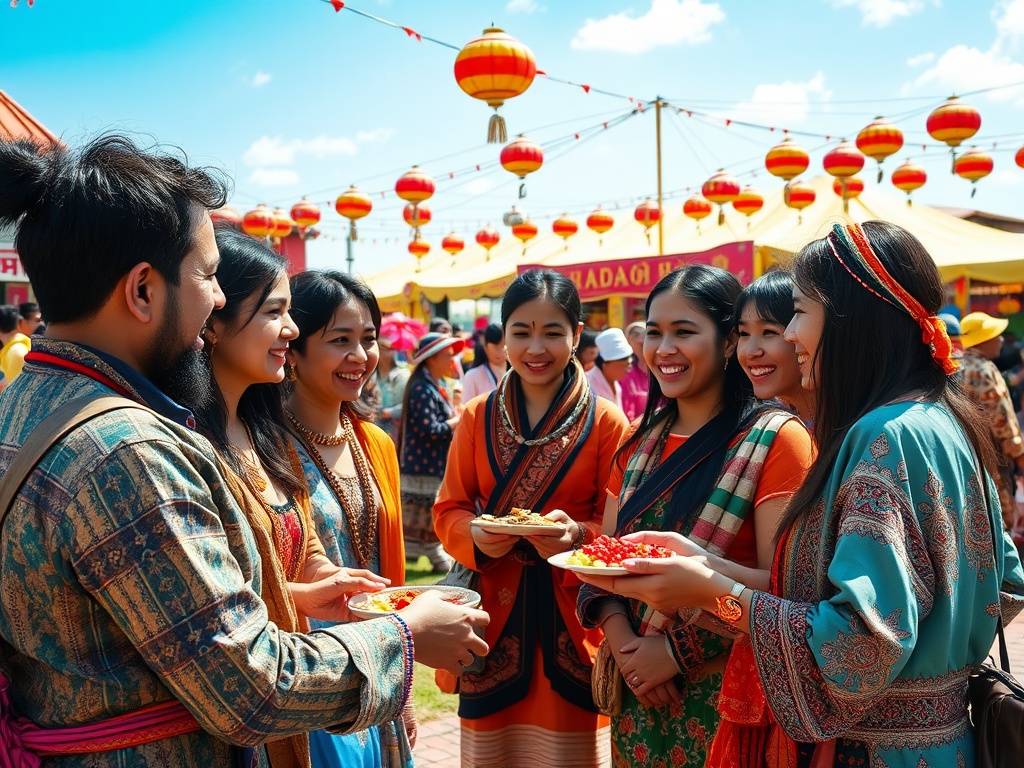
Cultural exchange is more than just an interaction; it is a profound journey that unearths shared experiences and fosters understanding among diverse communities. Through stories of friendships that transcend geographical boundaries, we discover how cultural exchange transforms lives, broadens perspectives, and nurtures empathy.
The beauty of cultural exchange lies in the unique stories that emerge from the bonds formed between individuals from different backgrounds. These friendships often challenge stereotypes and break down barriers, offering insights into each other’s cultures. Each story of cross-cultural friendship reflects the richness of human experience and the universal longing for connection.
Here are some remarkable ways cultural exchange enriches lives:
- Shared Experiences: Engaging in local traditions, festivals, and culinary delights allows individuals to experience cultures firsthand.
- Language Learning: Friendships often lead to language exchange, enhancing communication skills and cultural fluency.
- Building Empathy: Understanding different perspectives fosters compassion and appreciation for diversity.
- Networking Opportunities: Cross-cultural friendships can lead to professional collaborations and global networks.
When cultural exchanges occur, the impact extends beyond individual friendships to the communities involved. These interactions can lead to increased cultural appreciation and collaboration on social issues, fostering a sense of unity amid diversity. Here, we explore how such exchanges can bring about positive change.
| Impact Area | Description |
|---|---|
| Education | Increased cultural awareness in schools through student exchange programs. |
| Economics | Boosting local economies through tourism and cultural events. |
| Social Cohesion | Promoting inclusivity and understanding within multicultural communities. |
In conclusion, cultural exchange serves as a powerful tool for bridging worlds. By fostering friendships that celebrate diversity, we not only enrich our own lives but also contribute to a more harmonious global society.
Unlikely Bonds: How Friendship Defies Cultural Barriers
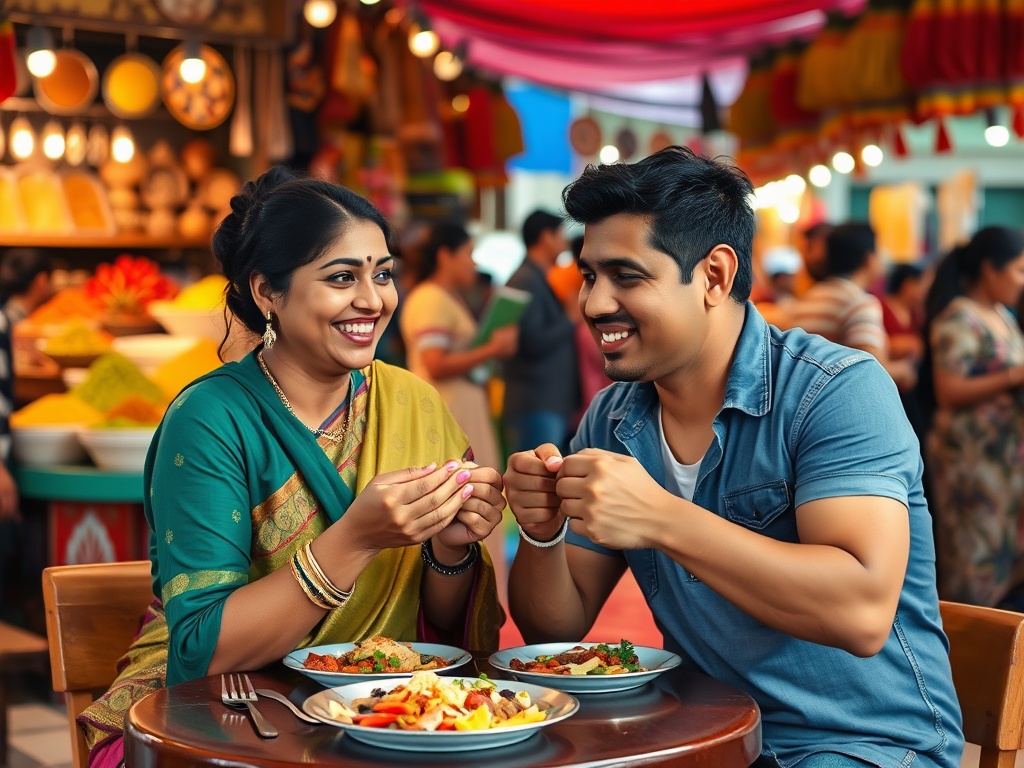
In a world where divisions often seem insurmountable, stories of unlikely friendships emerge as powerful narratives that redefine our understanding of cultural connections. These friendships, born from the most unexpected circumstances, demonstrate that the human spirit is capable of transcending societal norms and prejudices. By examining the profound bonds formed between individuals from vastly different backgrounds, we can learn how such connections foster mutual respect and understanding, ultimately creating a more cohesive society.
At the heart of many cross-cultural friendships lies a shared interest or passion that acts as a bridge between diverse backgrounds. Whether it’s a love for music, sports, or art, these commonalities provide a foundation upon which relationships can flourish. For instance, consider the story of two individuals: one from Japan and the other from Brazil, who met through their mutual admiration for soccer. Their friendship not only enabled them to exchange cultural insights but also showcased how their different perspectives enriched their understanding of the sport and its significance in their respective cultures.
Empathy plays a crucial role in overcoming cultural barriers. When individuals take the time to listen to each other’s stories and experiences, they develop a deeper appreciation for the struggles and triumphs that shape one another’s identities. A poignant example is the friendship between a Syrian refugee and a local community member in Germany. Through shared meals and conversations, they discovered common ground in their aspirations and dreams, ultimately transforming their perceptions of each other’s backgrounds. Such stories highlight that empathy can dismantle preconceived notions and foster authentic connections, leading to greater social harmony.
To better understand the dynamics of cross-cultural friendships, we can identify several key elements that contribute to their formation:
- Open-mindedness: Being receptive to different viewpoints and experiences.
- Curiosity: A genuine interest in learning about another culture.
- Communication: Effective dialogue that encourages sharing and understanding.
- Shared Experiences: Engaging in activities that create lasting memories.
- Support: Providing emotional and practical assistance to one another.
These elements not only facilitate the development of friendships but also enhance cultural appreciation, allowing individuals to embrace diversity in a meaningful way.
Stories of Resilience: Cross-Cultural Friendships in Times of Crisis
Crisis often acts as a catalyst for change, revealing the resilience of the human spirit and the profound connections that can be forged in the face of adversity. In moments of turmoil—be it natural disasters, political upheaval, or global pandemics—stories of cross-cultural friendships shine brightly, showcasing how individuals from diverse backgrounds come together to support one another. These friendships not only provide solace but also illustrate the strength found in solidarity across cultural divides.
Shared Struggles, Unbreakable Bonds
During challenging times, the act of reaching out transcends cultural boundaries, creating an unbreakable bond between individuals who may never have met under ordinary circumstances. For instance, consider a powerful story from the aftermath of the 2010 earthquake in Haiti. Two women—one Haitian and one American—found themselves united by a common goal: to help their community rebuild. Their friendship blossomed as they shared resources and strategies, illustrating how adversity can foster collaboration and understanding. This partnership not only aided recovery efforts but also laid the foundation for a lasting friendship that continues to inspire others.
Empathy in Action: Bridging Differences
In times of crisis, empathy becomes a guiding force, allowing individuals to step outside their own experiences and extend a hand to those in need. For example, during the COVID-19 pandemic, a group of neighbors from different cultural backgrounds in a suburban neighborhood formed a mutual aid network. They provided essential supplies and emotional support, demonstrating how crises can galvanize communities to act selflessly. Their collective efforts not only helped those in immediate need but also cultivated a sense of belonging and camaraderie among residents who previously knew little about one another’s cultures.
Lessons Learned Through Adversity
The resilience shown in cross-cultural friendships during crises teaches us invaluable lessons about the importance of unity and understanding. These stories remind us that even amidst chaos, there exists an opportunity for growth and connection. By weaving together the threads of different cultures, we create a vibrant tapestry of shared humanity—one that celebrates diversity and highlights our common goals. Ultimately, it is through these friendships that we find hope and strength, proving that together, we can weather any storm.
A Tapestry of Traditions: Celebrating Diversity Through Shared Experiences
In an increasingly interconnected world, the celebration of diversity through shared experiences becomes a vibrant tapestry that enriches our lives. Cultural exchange acts as a conduit for individuals to immerse themselves in the customs, beliefs, and traditions of others, building a profound appreciation for the uniqueness that each culture offers. As we explore these shared experiences, we uncover the transformative power they hold in fostering friendships that transcend borders.
Participating in local festivals and traditions is one of the most dynamic ways individuals can embrace cultural exchange. These events serve as a melting pot of experiences, where local customs are not merely observed but actively engaged in. For instance, consider the vibrant celebration of Diwali in India, where individuals from various cultural backgrounds gather to light lamps, share sweets, and engage in traditional dances. Such experiences not only offer a glimpse into the rich heritage of a culture but also create lasting bonds among participants. In this way, shared rituals foster mutual respect and appreciation, knitting together a community of diverse individuals united by the joy of celebration.
Food has an incredible ability to connect people, serving as a bridge between cultures and fostering friendships through shared meals. Engaging in culinary experiences—whether it’s cooking classes, potlucks, or food festivals—provides an opportunity to learn about another culture’s flavors, cooking techniques, and dining etiquette. For instance, a cooking session that brings together a Mexican chef and Italian home cooks can lead to delightful fusion dishes that reflect the beauty of cultural collaboration. This culinary exchange allows participants to bond over ingredients and recipes, creating a rich dialogue that celebrates the artistry of diverse cuisines. As these friendships develop, they often extend beyond the kitchen, evolving into a deeper understanding of each other’s backgrounds and lifestyles.
| Experience | Impact on Friendship |
|---|---|
| Participating in Festivals | Encourages collaboration and shared joy, breaking down cultural barriers. |
| Culinary Exchanges | Fosters teamwork and connection through the universal language of food. |
| Art and Music Collaborations | Provides a platform for creative expression, leading to deeper emotional connections. |
Ultimately, the threads of cultural exchange woven through shared experiences create a tapestry of traditions that enrich our lives and inspire friendships across cultural divides. These experiences remind us that, while our backgrounds may differ, our shared humanity unites us in a celebration of diversity. The vibrant stories born from these connections serve as powerful testaments to the potential of cultural exchange, urging us to embrace the unfamiliar and discover the beauty within our differences.
Lessons from the Heart: How Cross-Cultural Friendships Enhance Empathy
In a world increasingly defined by division and misunderstanding, cross-cultural friendships emerge as vital threads in the fabric of our shared humanity. These friendships, often sparked by chance encounters or shared passions, serve as profound opportunities for individuals to cultivate empathy and understanding. As we delve into the stories of those who have navigated the complexities of cultural differences, we uncover how these relationships not only enrich personal lives but also challenge societal perceptions. The journey of building a friendship across cultures is a testament to the power of connection.
Every cross-cultural friendship carries with it a narrative that highlights the beauty of shared experiences. When individuals share their life stories, they lay bare their vulnerabilities and triumphs, creating an intimate space for understanding to flourish. For instance, a friendship between a Nigerian student and a Finnish artist blossomed over shared challenges in adapting to new environments. Through their conversations, they discovered common fears and aspirations, which fostered a deep sense of empathy that transcended their cultural differences. This exchange of personal stories not only nurtured their bond but also encouraged them to advocate for one another in their communities, amplifying their voices and experiences. Such narratives remind us that empathy is not just about understanding others; it is also about recognizing our shared struggles and victories.
As cross-cultural friendships flourish, they often create a ripple effect that extends beyond the individuals involved. The empathy cultivated through these relationships has the potential to transform communities and challenge societal norms. Consider the inspiring story of a group of friends from diverse backgrounds who collaborated on a community art project aimed at addressing local social issues. Their differing perspectives enriched the creative process, allowing them to address complex themes of identity and inclusion. Through their art, they sparked dialogues that encouraged others in their community to confront biases and embrace diversity. This exemplifies how empathy, born from personal connections, can catalyze broader societal change, fostering an environment where understanding and respect can thrive.
From Strangers to Allies: The Role of Language in Building Cross-Cultural Connections
The journey of transforming strangers into allies is often paved with the shared language of communication. Language serves as both a bridge and a barrier, depending on the circumstances, and plays a pivotal role in fostering connections among individuals from diverse backgrounds. Through the process of learning from one another, friendships flourish, and cultural understanding deepens. This exploration delves into how language acts as a powerful tool for creating meaningful relationships across cultures.
Language learning is not merely about vocabulary and grammar; it is an immersive experience that opens doors to different cultures and ways of thinking. The act of learning a new language demonstrates a commitment to understanding another culture, fostering respect and appreciation. For example, when a native English speaker learns Mandarin, the effort symbolizes a willingness to engage with Chinese culture on a deeper level. Such endeavors often lead to friendships that transcend cultural divides, as language learners connect with native speakers who appreciate their efforts.
Language exchange programs have emerged as innovative platforms for individuals to practice language skills while simultaneously forging friendships. These initiatives allow participants to pair with speakers of different languages, creating an environment where mutual learning occurs. For instance, a Spanish speaker paired with a French speaker can not only enhance their language skills but also engage in discussions about their respective cultures, traditions, and lifestyles. This shared journey fosters camaraderie and often leads to lasting friendships that provide both personal and professional benefits.
While language is essential, nonverbal communication plays a crucial role in bridging cultural gaps. Gestures, facial expressions, and body language can convey emotions and intentions that words sometimes fail to capture. Understanding these nonverbal cues enhances the richness of cross-cultural friendships. For instance, a simple smile or a shared laugh can break the ice, creating an immediate sense of connection. Recognizing and respecting nonverbal communication fosters a harmonious environment where individuals feel valued and understood.
Key Steps to Building Cross-Cultural Connections Through Language:
- Engage in language learning: Demonstrating interest in another culture by learning their language.
- Participate in language exchange programs: Connecting with native speakers to practice language skills and share cultural insights.
- Embrace nonverbal communication: Being aware of body language and gestures to enhance mutual understanding.
- Share stories and experiences: Using language as a tool to narrate personal tales that foster empathy and connection.
In conclusion, the journey from strangers to allies is intricately tied to the role of language in building cross-cultural connections. By embracing language learning, participating in exchange initiatives, and respecting nonverbal cues, individuals can forge friendships that celebrate diversity and enrich their lives. The bonds created through these shared experiences serve as a testament to the transformative power of cultural exchange, urging us all to take that first step towards understanding one another.
Cultivating Global Citizens: The Impact of Cultural Exchange on Youth Development
The world is undergoing a profound transformation, and young people are at the forefront of this change. Cultural exchange programs have emerged as pivotal avenues for youth to cultivate a global mindset, enabling them to navigate diverse environments with confidence and empathy. Engaging in cultural exchanges allows young individuals to step outside their comfort zones, exposing them to new perspectives and fostering personal growth. As they immerse themselves in different cultures, they not only build friendships but also develop essential skills that prepare them for a more interconnected world.
At the heart of cultural exchange lies the cultivation of empathy—a vital trait for future global citizens. When youths engage with peers from various backgrounds, they are presented with opportunities to listen to different narratives and understand the lived experiences of others. This exposure challenges preconceived notions and biases, encouraging them to embrace diversity. For instance, a student participating in an exchange program in a rural area of a different country may discover the unique challenges and joys faced by their host family, creating a bond that transcends cultural differences. Such experiences not only broaden their horizons but also instill a sense of responsibility towards fostering inclusivity in their own communities.
Cultural exchange programs also equip young people with leadership skills essential for thriving in a global society. By working collaboratively with peers to tackle projects or engage in community service, they learn to communicate effectively across cultures, negotiate differences, and celebrate collective achievements. Whether it’s organizing an event that showcases their respective cultures or participating in discussions on social issues, these experiences cultivate a sense of agency among youths. Moreover, as they navigate the complexities of cultural interactions, they develop a heightened global awareness that transcends borders, preparing them to address pressing challenges such as climate change, poverty, and inequality. Ultimately, the friendships forged through cultural exchange become the building blocks of a more compassionate and engaged generation, eager to contribute positively to the world.
